9 Drought-Resistant Landscaping Ideas for Wyoming
BY LYDIAN PINE | JUNE 6TH, 2023 | LAWN CARE, WYOMINGWe rarely compare Wyoming to South Africa or Mongolia, but all three steppe locations have almost identical climates and soil. Wyoming’s arid climate requires drought-resistant landscaping to reduce irrigation strains. We have gathered 9 drought-resistant landscaping ideas for your Wyoming landscape to help conserve water and create a low-maintenance oasis.
In this article, we will cover:
- Conserve Water With Xeriscaping
- Landscape With Native Plants
- Add Drought-Resistant Turfgrass
- Mulch Your Flower Beds
- Install Drip Irrigation
- Harvest Rainwater With a Rain Barrel
- Plant a Rain Garden
- Create a Rock Garden
- Install Sustainable Hardscaping
What is Drought-Resistant Landscaping?
Drought-tolerant landscaping requires very little water to remain green. Creating a drought-resistant, or water-efficient landscape, conserves water and reduces maintenance.
Drought-tolerant plants have adapted to arid conditions and have low watering requirements. Conserving water helps preserve the ecosystem. Most Montana native plant species are drought-tolerant options that require minimal supplemental irrigation once established.
9 Drought-Resistant Landscaping Ideas for Wyoming
1. Conserve Water With Xeriscaping
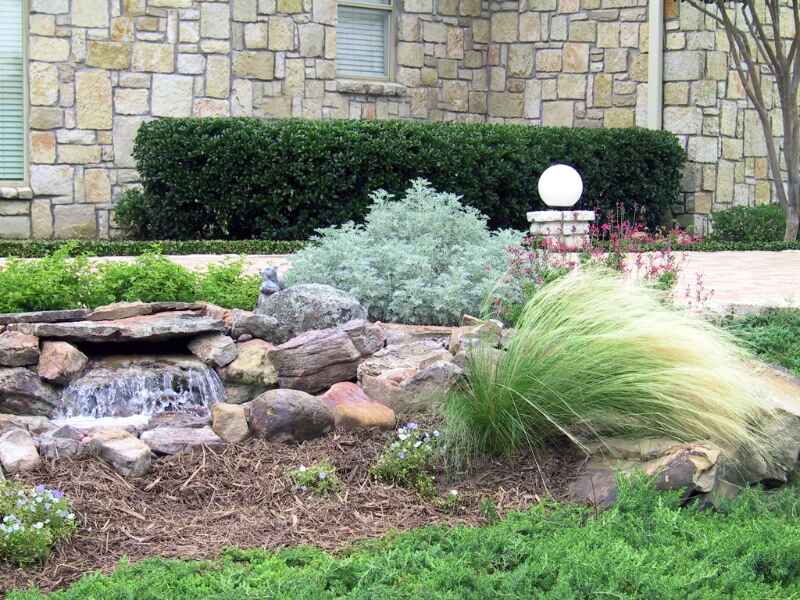
Photo Credit: InCommunicado / Canva Pro / License
Xeriscaping focuses on low-maintenance landscaping with an emphasis on water conservation. The practice involves creating a beautiful home landscape that requires no watering except natural rainfall.
Xeriscaping often relies on strategically placed indigenous plants that survive off rainfall, even in Wyoming’s dry, windy climate. Native plants and turfgrasses are a great water-wise option for xeriscaping your yard. They are naturally drought resistant and adapted to harsh seasonal shifts. Besides native plants, some basic steps for xeriscaping your yard include:
- Plan and hydrozone your landscape by grouping plants with similar water needs together
- Mulch your flower beds for maximum water retention
- Install smart irrigation with a rain sensor, drip lines, and automatic sprinklers
- Minimize turfgrass area
- Blend hardscaping elements into your landscape
Advantages of xeriscaping:
- Conserves water
- Reduces pesticide and herbicide use
- Reduces runoff
- Lowers water bills
Estimated cost: Professional xeriscaping costs between $5 to $20 per square foot, depending on many factors like plant selection and the size of your yard. While upfront costs may seem high, you will save around $0.36 per square foot annually on water and maintenance costs.
2. Landscape With Native Plants
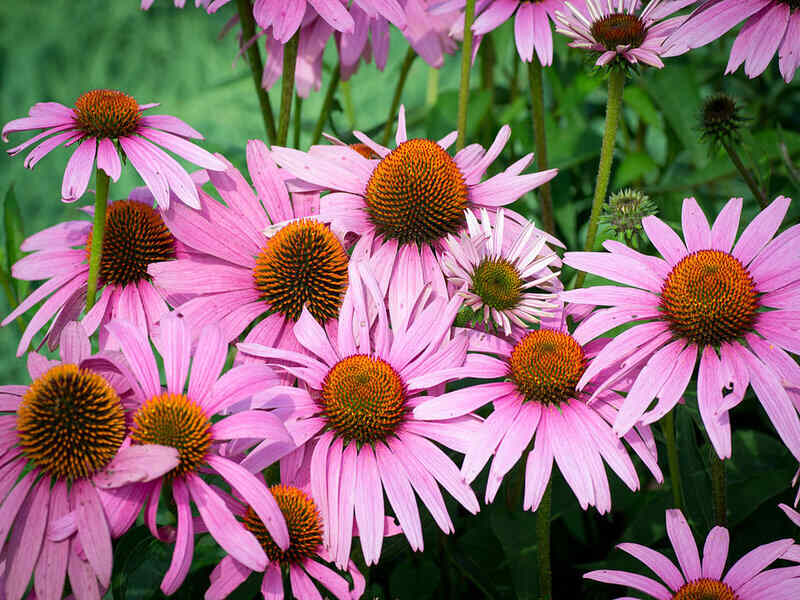
Photo Credit: Andrew C / Wikimedia Commons / CC BY 2.0
Most Wyoming native plants are perennials, bouncing back year after year, creating a low-maintenance landscape. Natives are adapted to Wyoming’s arid conditions, shifting temperatures, and local pests and diseases. Specimens are low-maintenance and attract local pollinators like hummingbirds, butterflies, and bees.
There are many Wyoming native plants to choose from, including:
- Fragrant Sand Verbena (Abronia fragrans)
- Maidenhair Fern (Adiantum aleuticum)
- Purple Coneflower (Echinacea purpurea)
- Rabbitbrush (Chrysothamnus)
- Red Baneberry (Actaea rubra)
- Silver Buffaloberry (Shepherdia argentea)
Advantages of native plants:
- Thrive in Wyoming’s semi-arid and continental climates and four seasons
- Require less water, fertilizer, and pesticides
- Support a diverse ecosystem, providing food and shelter for local wildlife, hummingbirds, and pollinators
- Disease and pest-resistant
- Prevent water run-off
- Improve air quality
Estimated cost: Native plant prices vary widely based on many factors, including type, size, and location. On average, you can expect to spend between $15 to $50 per shrub, $5 to $50 per vine, and $200 to $1,500 per tree.
3. Add Drought-Resistant Turfgrass
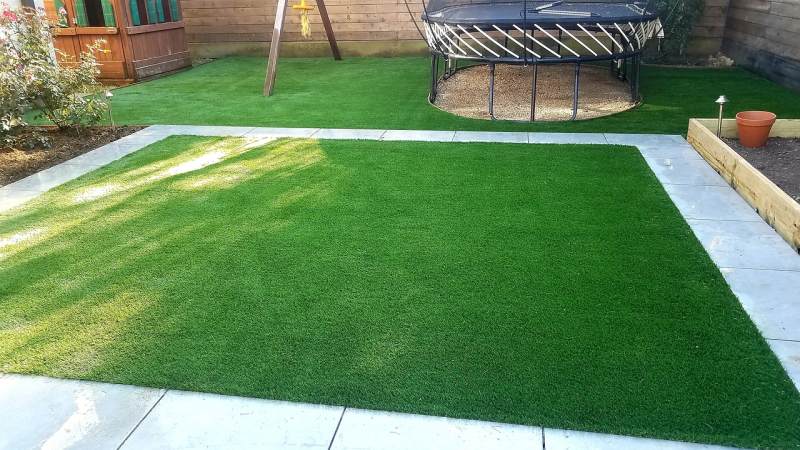
Photo Credit: 2020Noe / Pixabay / License
Some grass types are more drought-resistant than others. Wyoming’s harsh climate requires a cool-season, drought-tolerant turfgrass that can survive the cold winters. Wyoming’s climate is classified as arid and continental, with extreme sunlight and shifting temperatures.
Drought-resistant Wyoming grasses include:
- Buffalograss
- Fine Fescue
- Kentucky Bluegrass
Advantages of drought-resistant turfgrass:
- Require less water, fertilizer, and pesticides
- Reduce water bills
- Decrease runoff
- Lower maintenance needs
Estimated cost: Professional seeding or re-seeding typically costs between $700 to $1,850, depending on the size of your lawn and the seed cultivar you select. If you opt for sod installation, which takes less time to mature, you can expect to spend between $6,650 to $13,700.
4. Mulch Your Flower Beds
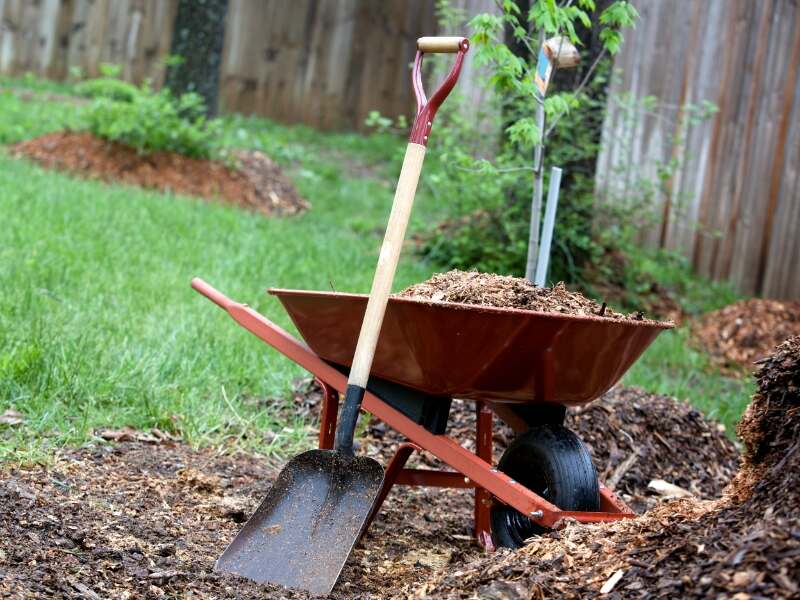
Photo Credit: eyecrave / Canva Pro / License
Mulching is a low-cost DIY job and essential to xeriscaping. Mulch helps plants keep moisture and protects their roots from extreme temperatures. There are two types of mulch: organic and inorganic mulch.
Organic mulch adds beneficial nutrients to the soil as it decomposes. Inorganic mulches are more durable and low-maintenance but do not offer additional nutrients. It is important to note you will need to replace organic mulches like wood chips annually with a fresh layer.
Some examples of mulch are:
Organic mulch:
- Hardwood and softwood chips
- Bark
- Wood shavings
- Pine needles
- Straw or hay
- Leaves
- Grass clippings
Inorganic mulch:
- Rock, stone, lava rock
- Landscape glass
- Rubber mulch
- Landscape fabric
Advantages of mulch:
- Prevents soil erosion
- Stabilizes soil temperatures
- Increases moisture retention
- Reduces weed growth
- Minimizes evaporation
Estimated cost: Mulch costs between $15 to $75 per cubic yard or around $2 to $6 per bag.
5. Install Drip Irrigation
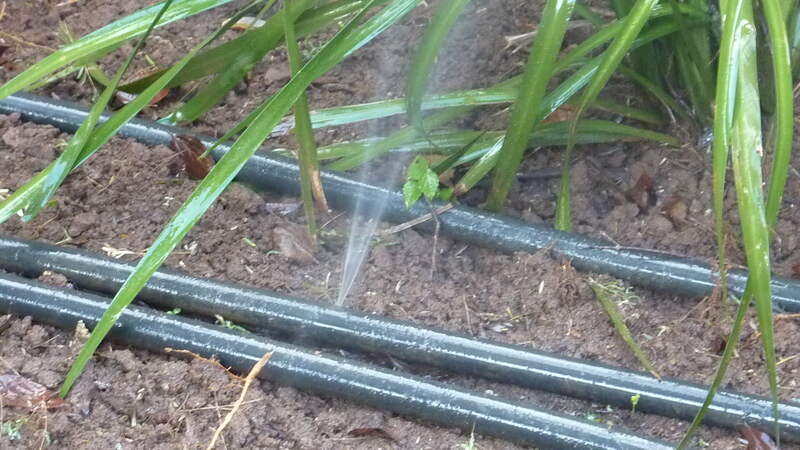
Photo Credit: Sciencehacker / Wikimedia Commons / CC BY-SA 4.0
Drip irrigation lines conserve water and are more efficient than traditional sprinklers, rotating sprayer heads, or garden hoses. Drip irrigation systems slowly deliver water directly to plant roots. They are installed underground or on the soil’s surface.
Experts can retrofit your existing automatic sprinkler system for drip irrigation. For a portable option, opt for a soaker hose you can move from bed to bed.
Advantages of drip irrigation:
- Prevents disease by reducing moisture
- Reduces weeds
- Reduced water bills.
- Reduces nutrient loss
Estimated cost: Professional drip irrigation installation costs between $1.50 to $4.75 per square foot. Installing a drip irrigation system in a 500-square-foot zone typically costs between $750 to $2,400.
6. Harvest Rainwater With a Rain Barrel

Photo Credit: zerocattle / Canva Pro / License
Harvest rainwater for later use by installing a rain barrel station on your landscape. Place the rain barrel beneath a downspout. Many homeowners blend the rain barrel into the surrounding landscape by decorating the area with plants or rocks.
For every inch of rain that falls on one square foot of your roof, your rain barrel harvests 0.6 gallons of water. A rain barrel system attached to a 100-square-foot roof collects up to 60 gallons of water after one inch of rain.
Advantages of a rain barrel system:
- Free resources
- Reduces runoff
- Conserves water
- Prevents erosion
- Improves local water quality
Estimated cost: A 50-gallon rain barrel typically costs between $100 to $150, depending on the material.
7. Plant a Rain Garden
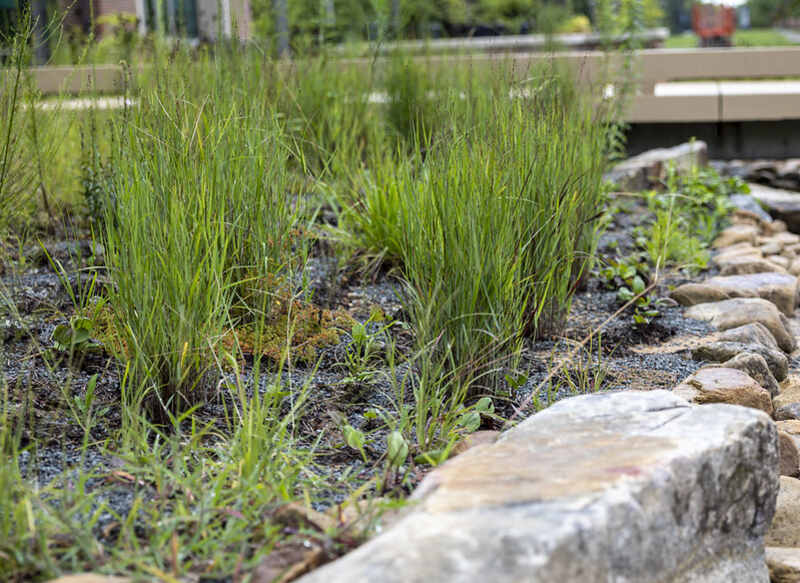
Photo Credit: Alabama Extension / Flickr / CC0 1.0
Rain gardens are small, shallow depressions that contain deep-rooted native plants. They are not only attractive but also conserve water. Rain gardens lower the risk of flooding and provide erosion control by reducing runoff. They naturally capture stormwater and filter out pollutants.
Some popular rain garden Wyoming plants include:
- Bee Balm (Monarda fistulosa)
- Black Walnut (Julans nigra)
- Daylily (Hemerocallis flavor)
- Chokecherry (Prunus virginiana)
- Rocky Mountain Bluebells (Mertensia lanceolata)
- Silverberry (Elaeagnus commutata)
Advantages of a rain garden:
- Conserves water
- Reduces runoff and flood risk
- Provides erosion control
- Reduces pollution
- Improves drainage
Estimated cost: A DIY rain garden costs between $3 to $5 per square foot, while professional installation costs between $10 to $20 per square foot.
8. Create a Rock Garden
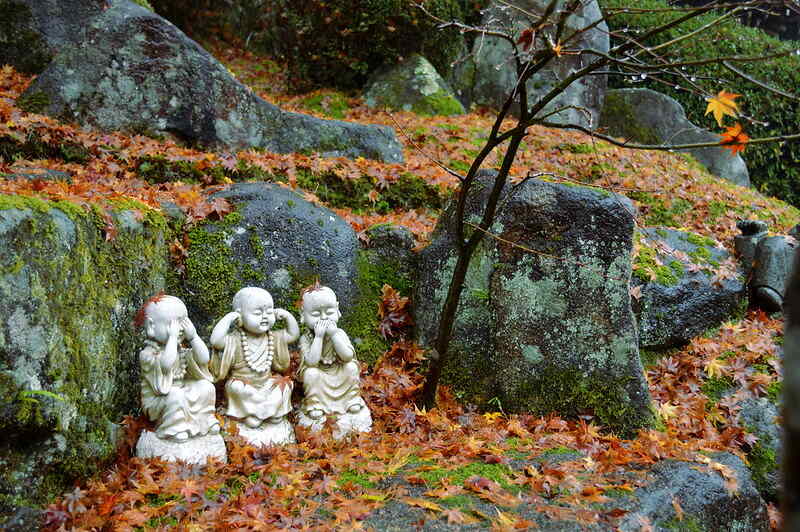
Photo Credit: Antífama / Flickr / CC BY 2.0
Install stones and rocks to create an elegant rock garden or pathways. This simple DIY job does not have to cost a penny. Rock gardens are a great way to show off native Wyoming elements. Accentuate your rock garden with ornamental plants, water features, and more.
Advantages of a rock garden:
- Durable
- Low-maintenance
- Adds curb appeal
- Extends usable space
Estimated cost: Rock garden installation costs between $400 to $1,000, depending on the size and materials.
9. Install Sustainable Hardscaping
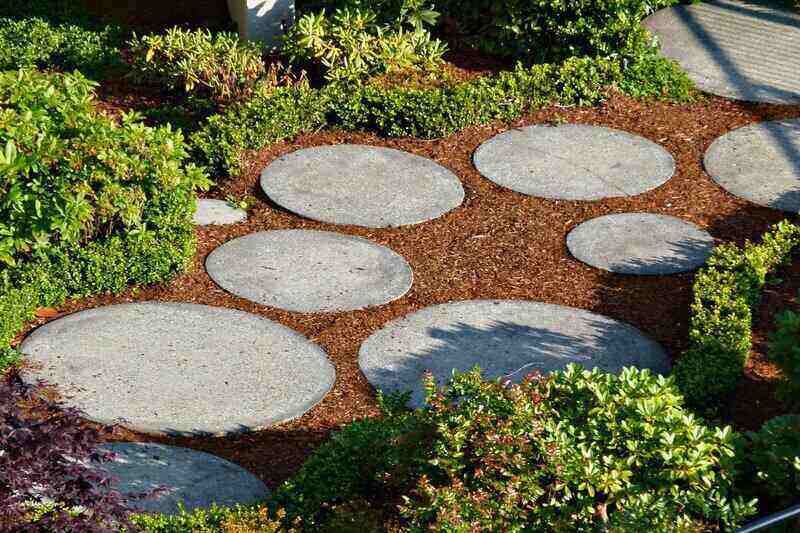
Photo Credit: PxHere / CC0 1.0
Turfgrass requires a lot of water to remain green. Limiting the turfgrass area of your landscape reduces its overall watering requirements. Consider replacing sections of your grass with sustainable hardscaping elements.
Hardscapes are man-made features, including:
- Decks
- Patios
- Pergolas
- Garden paths
- Decorative stones
- Fire pits
- Rock gardens
- Water features
- Grill surrounds
Hardscapes do not require watering, pruning, or mowing. In fact, they don’t require maintenance at all except for an annual cleaning. Be prepared. Hardscapes are an expensive upfront investment, but they increase your home’s value and curb appeal.
Advantages of hardscapes:
- Only require annual cleaning
- Increase property value and curb appeal
- Define spaces and increase functionality: entertaining, cooking, outdoor living
- Conserve water
- Reduce weeds and pests
- Create shade
- Reduce soil erosion
Estimated cost: Be prepared to spend around $7,500 for a new deck, $4,000 for a patio, $850 for a fire pit, and $3,000 for a flagstone walkway.
FAQ About Drought-Resistant Landscaping
Some strategies to minimize water usage in your landscape include:
● Install efficient irrigation, including drip lines and a smart controller with a rain sensor
● Group plants with similar watering needs
● Mulch your flower beds to reduce evaporation
● Practice good soil management techniques to improve moisture retention
Many established drought-tolerant plants can survive for several months without water. Factors affecting your plant’s ability to survive long drought periods include:
● Plant species
● Climate
● Soil type
● Plant health and maturity
The first step to a healthy, drought-tolerant landscape is good soil management practices. Follow some of these tips to help maintain healthy plant roots:
● Send a soil sample in for testing annually
● Add compost and organic matter to increase fertility and drainage
● Apply mulch
● Practice proper watering to avoid under or over watering
● Reduce soil erosion with windbreaks, retaining walls, or specialized plants
● Minimize chemicals
Need a Hand With Your Drought-Resistant Wyoming Landscape?
Yard work in Wyoming can feel like thankless work when there are so many chores to complete. Let Wikilawn connect you with a local lawn care pro to take care of your yard chores, so you can spend more time enjoying your outdoor space.
Photo Credit: Pancaketom / Canva Pro / License